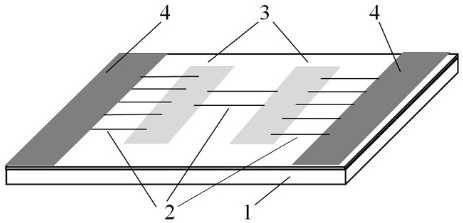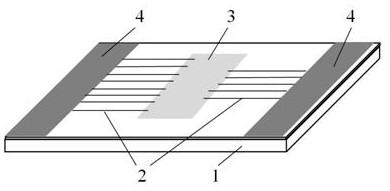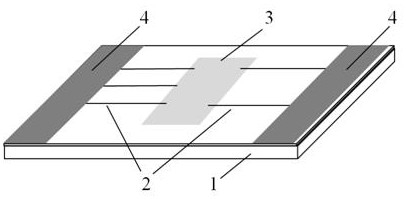Carbon nanotube/graphene van der Waals heterojunction photoelectric device, its construction method and application
A carbon nanotube and optoelectronic device technology, which is applied in the field of carbon nanotube/graphene van der Waals heterojunction optoelectronic devices, can solve the problems of limiting the detectability of the device, large dark current of the device, etc., achieves high-efficiency charge transfer efficiency, improves optoelectronic performance, the effect of reducing the chance of recombination
- Summary
- Abstract
- Description
- Claims
- Application Information
AI Technical Summary
Problems solved by technology
Method used
Image
Examples
Embodiment 1
[0030] This embodiment provides a carbon nanotube / graphene van der Waals heterojunction optoelectronic device and its preparation method, its structural schematic diagram is as follows figure 2 shown. Its construction method is as follows:
[0031] (1) Si / SiO 2 The substrate is used as an insulating base, in Si / SiO 2 CVD grown graphene was transferred on the substrate by wet transfer method.
[0032] (2) The photolithography process is used to etch the inter-electrodes into a graphene pattern structure, and the excess graphene is removed by an oxygen plasma etching process.
[0033] (3) Leave grooves at the position where the carbon nanotubes need to be aligned by photolithography. The density of permanent carbon nanotubes is 100 / μm; the carbon tubes except the grooves are cleaned by the lift-off process.
[0034] (4) The pattern of the electrode is photoetched through the photolithography process, and the patterned Au electrode pair is deposited by the traditional micro...
Embodiment 2
[0037] This embodiment provides a carbon nanotube / graphene van der Waals heterojunction optoelectronic device and its preparation method, its structural schematic diagram is as follows image 3 shown. Its construction method is as follows:
[0038] (1) Si / SiO 2 The substrate is used as an insulating base, in Si / SiO 2 CVD grown graphene was transferred on the substrate by wet transfer method.
[0039] (2) The photolithography process is used to etch the structure of two graphene patterns between the electrodes, and the excess graphene is removed by an oxygen plasma etching process.
[0040] (3) Leave grooves at the position where the carbon nanotubes need to be aligned by photolithography. The density of permanent carbon nanotubes is 20 / μm; the carbon tubes except the grooves are cleaned by the lift-off process.
[0041] (4) The pattern of the electrode is photoetched through the photolithography process, and the patterned Au electrode pair is deposited by the traditional ...
Embodiment 3
[0044] This embodiment provides a carbon nanotube / graphene van der Waals heterojunction optoelectronic device and its preparation method, its structural schematic diagram is as follows Figure 4 shown. Its construction method is as follows:
[0045] (1) Si / SiO 2 The substrate is used as an insulating base, in Si / SiO 2 CVD grown graphene was transferred on the substrate by wet transfer method.
[0046] (2) The photolithography process is used to etch the structure of four graphene patterns between the electrodes, and the excess graphene is removed by an oxygen plasma etching process.
[0047] (3) Leave grooves at the position where the carbon nanotubes need to be aligned by photolithography. The groove spacing is 5 μm. The semiconductor single-walled carbon nanotubes are transferred to the sample by AC dielectrophoresis, and the graphene space is patterned. The density of the aligned semiconducting carbon nanotubes is 1 / μm; the carbon tubes except the grooves are cleaned by t...
PUM
 Login to View More
Login to View More Abstract
Description
Claims
Application Information
 Login to View More
Login to View More - R&D
- Intellectual Property
- Life Sciences
- Materials
- Tech Scout
- Unparalleled Data Quality
- Higher Quality Content
- 60% Fewer Hallucinations
Browse by: Latest US Patents, China's latest patents, Technical Efficacy Thesaurus, Application Domain, Technology Topic, Popular Technical Reports.
© 2025 PatSnap. All rights reserved.Legal|Privacy policy|Modern Slavery Act Transparency Statement|Sitemap|About US| Contact US: help@patsnap.com



